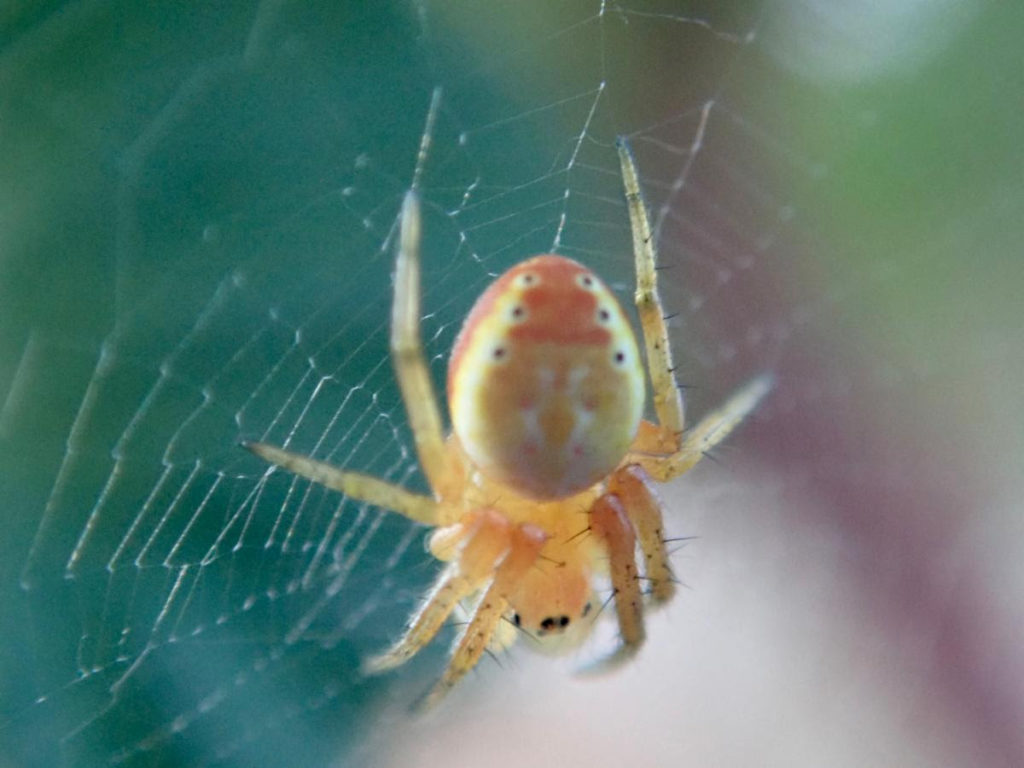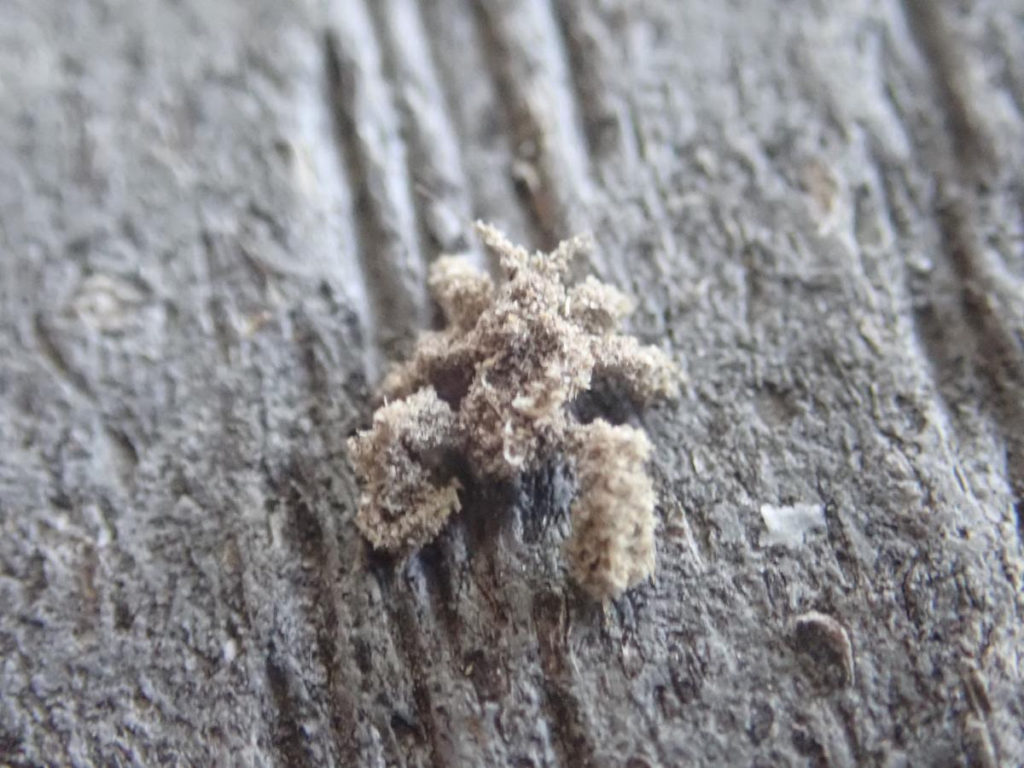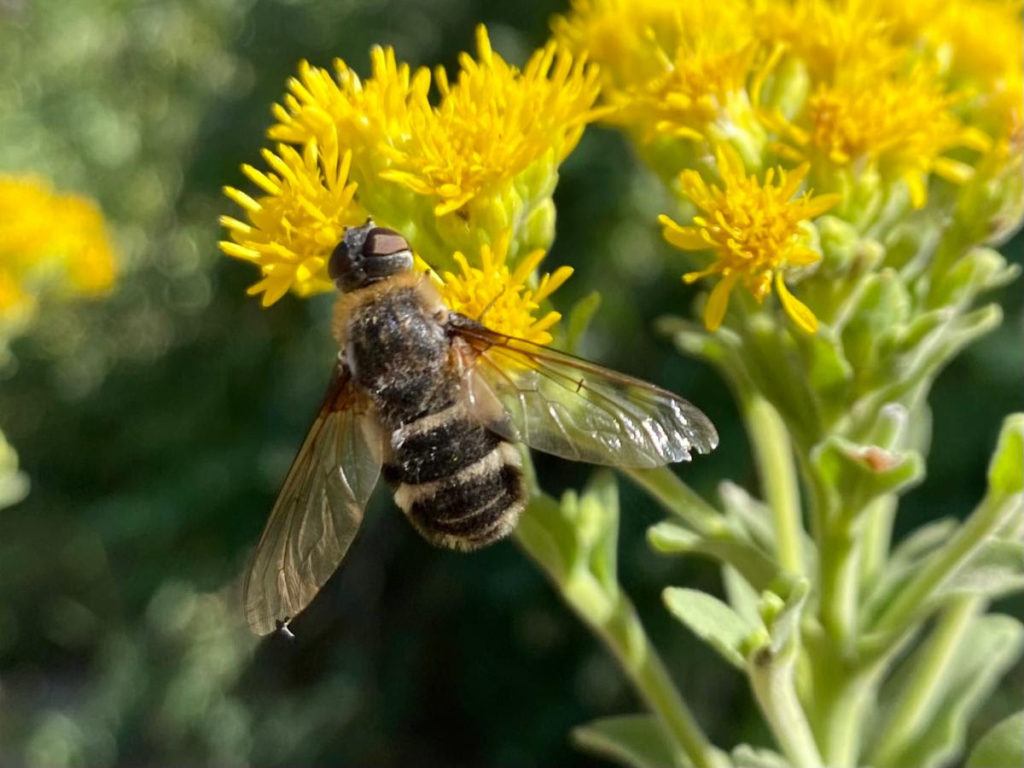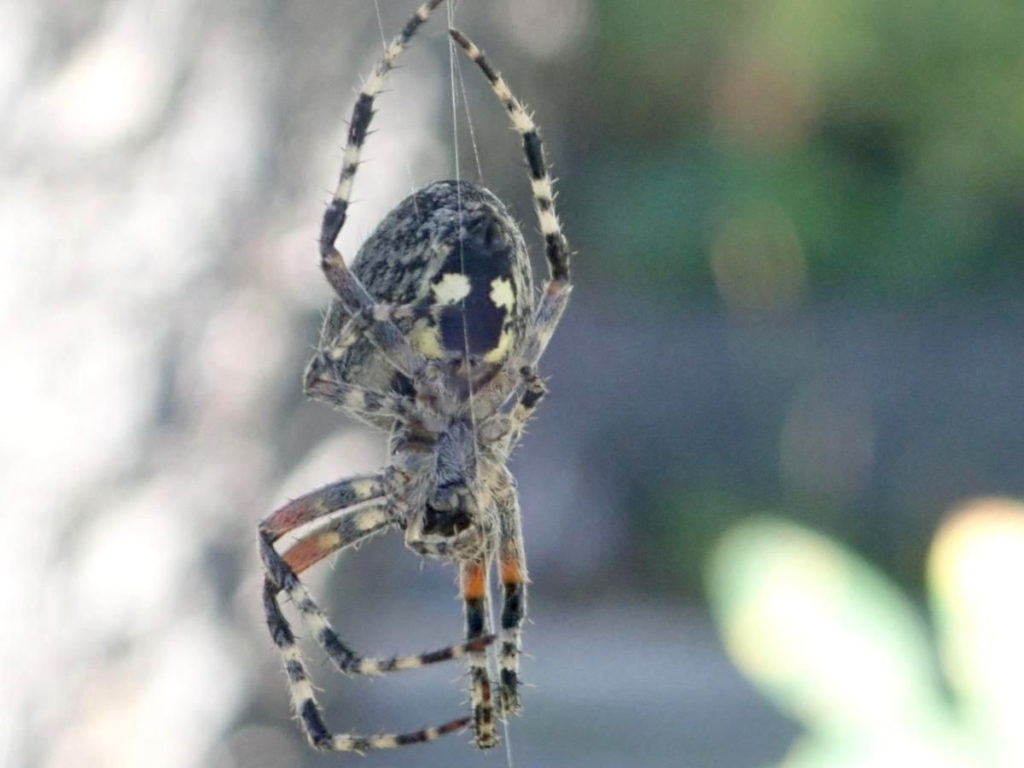Happy September! We’re kicking this month off with mistaken identities, elaborate disguises, and disappearing acts. The theme for this week is undoubtedly “crypsis.” Crypsis is a broad term that refers to an animal’s ability to avoid detection: they can disappear into their habitat using camouflage or attempt to look like something more dangerous than they are. Several of this week’s submissions take a keen eye to recognize; a great reminder that, even if you don’t realize it, you’re probably never too far from a bug.

Meadowhawk
Sympetrium sp.
Without a clear shot of the face of this dragonfly, determining species is difficult. But based on the lack of thoracic markings and the prominent black triangles on the abdominal segments, we can at least narrow it down to one of two species: the white-faced meadowhawk (S. obtrusum) or the cherry-faced meadowhawk (S. internum). The vibrant coloring gives this individual away as a male; we can’t help but think of comparing the color to a Dairy Queen cherry dilly bar. Or maybe we’re just hungry…
Stacy Carr-Poole, August 19th, 2023. Maclay Flat Nature Trail, Missoula, MT.
Longhorn Bee
Melissodes sp.
Long-horned bees are so named for the male’s exceptionally long antennae, giving the appearance of horns. This tribe (Eucerini) is distributed across the globe but is most diverse in the Western hemisphere. However, most agree that the group needs a taxonomic overhaul, as many genera are small and poorly described. It is generally thought that there are about 750 sp. worldwide, with most of the species (~500) landing in one of five genera (despite there being about 36 genera overall).
Brenna Shea, August 28th, 2023. Missoula, MT.


Six-spotted Orbweaver
Araniella displicata
The six spotted orbweaver may be the original itsy bitsy spider. The largest females rarely measure over 7mm in length, with their legspan maxing out at 17mm. Like the majority of spider species, the males are even smaller. Unlike many female orbweavers, who are mature and gravid in the fall, A. displicata lays her eggs in early summer. Many orbweaver species die off, leaving their eggs to overwinter in their egg cases, but by fall, the six spotted orbweaver eggs have already hatched. The spiderlings overwinter in their juvenile stage, seeking a warm retreat to shelter themselves from the harsh winter conditions.
Brenna Shea, August 26th, 2023. West Fork Butte, Lolo, MT.
Masked Hunter
Reduvius personatus
This is not the first masked hunter we’ve featured on What’s Buzzin’ this year, but it is the first nymph. The nymphal stages of this predatory true bug are where the name “masked hunter” originates, as they coat themselves with dust to camouflage themselves. The strategy is effective; with their minuscule size, they are easily mistaken for a piece of dust or lint – until they start walking.
Brenna Shea, August 25th, 2023. Missoula, MT.


Locust Borer
Megacyllene robiniae
Originally hailing from the northeast United States, the locust borer has made its way west as its host plant, black locust (Robinia pseudoacacia), has been cultivated and used for landscaping purposes across North America. Both the insect and plant are now considered invasive in our area despite originating on the North American continent. The larvae feed on (and are considered serious pests of) black locust, while the adults take nectar, preferentially from goldenrod (where these two were found).
Brenna Shea, August 28th, 2023. Missoula, MT.
Unnamed Carpet Moth
Zenophleps lignicolorata
This cryptic carpet moth is found across western North America, from southern Alaska to northern Mexico. Their cryptic patterning allows them to practically disappear against tree trunks, making this a sharp find. Not much is known about this species, or even the genus, of which there are four species in the US.
Connie Geiger, August 25th, 2023. Helena, MT.


Trashline Orbweaver
Cyclosa sp.
Trashline orbweaver spiders get their common name because they’re not the tidiest of spiders, decorating their web with a line of debris (prey remains, plant material, etc.). This “mess” helps camouflage the spider, protecting it from potential predators. Five species of Cyclosa occur in North America north of Mexico, but only Cyclosa conica and Cyclosa turbinata are found in Montana. Females and males mature from mid May to summer.
Brenna Shea, August 26th, 2023.
West Fork Butte, Lolo, MT.
Banded Bee Fly
Villa sp.
This is, by all accounts, one of the largest bee flies we’ve ever encountered. When in flight, it’s easily mistaken for a bumble bee. Like many flies, identifying to the species level is difficult, with little to no information regarding diagnostic characteristics. Most taxonomists agree the genus needs revision.
Brenna Shea, August 28th, 2023. Missoula, MT.


Green Lacewing Larva
Family Chrysopidae
This lacewing larva was featured in an Instagram post earlier this week, but we couldn’t not include it in a crypsis-themed What’s Buzzin’. Some lacewing species will disguise themselves (when in their larval stage) by piling debris on top of their body; some use lichen, while this individual chose to utilize bits of wood and rock. Others, though, will amass the corpses of their half-eaten prey on their back.
Brenna Shea, August 26th, 2023. West Fork Butte, Lolo, MT.
Tall Flea Beetle
Disonycha procera
Flea beetles are so named for their enlarged hind femora, which allows them to jump – like a flea. We’re stumped as to why this species is called the “tall” flea beetle; it is larger than most at about 6mm long. Tall, though? Not the first word that comes to mind. Flea beetles are leaf skeletonizers, eating the outer layers of leaves and leaving a decimated “skeleton” behind. While some species are considered pests, many are used as noxious weed control.
Stacy Carr-Poole, August 19th, 2023. Maclay Flat Nature Trail, Missoula, MT.


Nordmann’s Orbweaver
Araneus nordmanni
This large, stunning orbweaver is found throughout the western United States and Northeast but is absent from the Great Plains. While her underside is flashy, perhaps as an attempt to startle predators, the top of her body perfectly blends with the bark of the lodgepole pine she uses to anchor her web. When startled (as she was when we nearly walked through her home), she retreats to the tree trunk and disappears against the bark.
Brenna Shea, August 26th, 2023. West Fork Butte, Lolo, MT.
Maple Spanworm Moth
Ennomos magnaria
Autumn leaf or living insect? These delicate looking moths are typically found flying from mid to late summer into early fall when their dried, leaf-like appearance is most helpful for camouflage. They inhabit mixed and deciduous forests from coast to coast in southern Canada and the northern U.S. (also found south along the east and west coast, being absent in parts of the central and southern states). The larvae are no camouflage slouches themselves, expertly mimicking a twig.
Connie Geiger, August 25th, 2023. Helena, MT.
